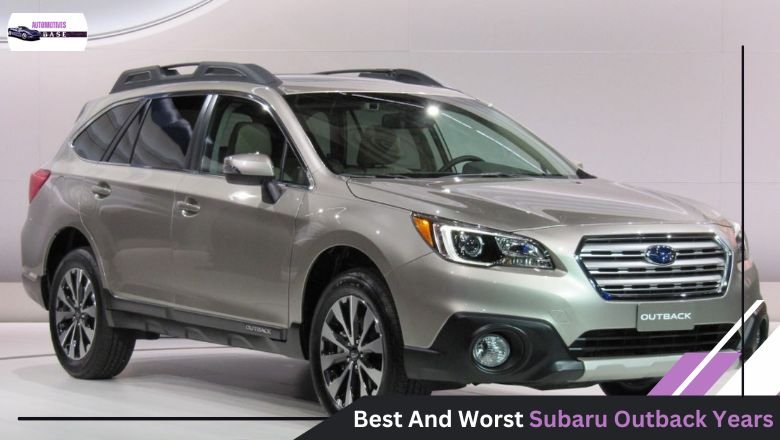In this comprehensive breakdown of the Best and Worst Subaru Outback Years, we delve deep into each generation to uncover the gems and pitfalls that lie within. From rugged off-road capabilities to luxurious interior features, each generation of the Subaru Outback has its own unique appeal.
Subaru Outback Generations
The Subaru Outback has continued to evolve since the year 2000, offering both impressive performance and practicality to drivers. Among the standout models, the 2013 Outback is often regarded as one of the best years due to its solid build quality and efficient engines. The 2005 Outback is also highly praised for its reliability and off-road capabilities, making it a favorite among adventure enthusiasts.
The 2011 Outback is sometimes considered one of the worst years due to reported issues with transmission and engine problems. The 2008 Outback faced some criticism for its handling on rough terrain and overall comfort level.
| Generations | Years |
|---|---|
| 2nd generation (BH) | 2000-2004 |
| 3rd generation (BP) | 2005-2009 |
| 3rd generation (BP) | 2010-2014 |
| 5th generation (BS) | 2015-2019 |
| 6th generation (BT) | 2020-2024 |
Understanding the various generations of the Outback is essential for making informed purchasing decisions. Each generation of this popular vehicle has seen significant changes and improvements, impacting its performance, features, and overall value. For example, newer generations may offer more advanced technology and safety features compared to older models.
Subaru Outback Best, Neutral, and Worst Years
Determining the best and worst years for the Subaru Outback involves analyzing data from multiple sources. Factors considered include owner-reported reliability, annual maintenance costs, safety ratings, Consumer Reports scores, NHTSA recalls and complaints, as well as ratings from Edmunds, JD Power, Kelley Blue Book, Vehicle History, and Cars.com.
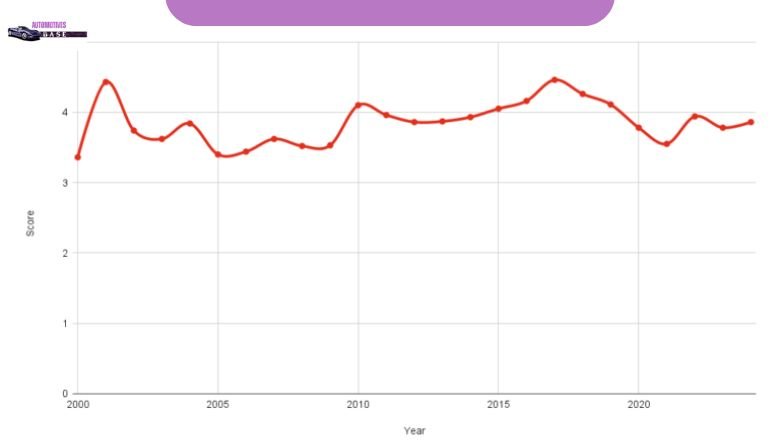
By compiling insights from various ratings in graph format, we can visualize how the Subaru Outback has performed over different model years. This comprehensive assessment enables car buyers to make informed decisions based on key metrics such as reliability, maintenance costs, safety features, and overall owner satisfaction.
Neutral Years in the automotive industry pertain to model years that demonstrate average performance in terms of reliability. These years don’t stand out for exceptional quality, nor do they have significant drawbacks. It’s important to consider various factors that impact a car’s reliability, such as maintenance records and consumer complaints.
Positive attributes contribute to a car’s overall standing, issues like NHTSA recalls can lower its score. A higher frequency of complaints and recalls can lead to decreased reliability ratings and affect the car’s ranking in comparison to other models. Neutral years offer consumers a middle-of-the-road option without notable strengths or weaknesses.
Best And Worst Subaru Outback Years, 2nd Generation (2000–2004)
The second generation of the Subaru Outback, spanning from 2000 to 2004, was a pivotal time for the model. With enhanced design and mechanical upgrades, this era solidified Subaru’s position in the automotive industry. The years 2000 and 2001 stood out as some of the best for the Outback, with improvements in safety features and performance. These advancements helped increase customer satisfaction and brand loyalty.

The year 2003 presented challenges for some Outback owners, with reports of transmission issues affecting a portion of vehicles. This setback slightly tarnished Subaru’s reputation temporarily but was addressed promptly by the manufacturer.
The Best Subaru Outback Year: 2001
2001 is best year Subaru Outback model, which is the most reliable and powerful in the second-generation lineup. With enhanced engine performance and sleek design, it captured the hearts of SUV enthusiasts. Subaru has made significant strides in improving safety features and integrating advanced technology into the vehicle.
Some owners did experience minor issues with fuel leakage during cold winters. Reports surfaced about occasional service brake malfunctions in colder conditions. The overall reception of the 2001 model remained positive among customers who valued its performance and style.
The Neutral Year: 2002
Neutral year of 2002, the Subaru Outback entered the automotive scene with a mix of success and challenges. Building on the strengths of its previous model, this iteration continued to impress with its reliability and performance. The car retained many of the advanced technological features that had been well-received in the 2001 version, ensuring a smooth driving experience for its owners.
Some issues did persist from the previous year. A few drivers reported encountering minor engine and brake troubles reminiscent of those seen in the 2001 model. There were isolated cases of fuel leak problems occurring during cold weather conditions. The feedback suggested that the 2002 Outback maintained its reputation as a dependable vehicle choice for consumers seeking both safety and functionality.
The Worst Years: 2000, 2003, 2004
During the early 2000s, several models faced significant issues. In 2000, Ford experienced problems with Firestone tires separating unexpectedly, leading to potential accidents at high speeds. The same year saw transmission and engine problems in various vehicles.
In 2003, the Subaru Outback was impacted by multiple recalls, with concerns about exploding airbag inflators. A recall was initiated in 2016, affecting over 300,000 vehicles. The following year, the 2004 model faced complaints about unresponsive accelerator pedals. These issues highlighted safety concerns and led to necessary actions from manufacturers.
Best And Worst Subaru Outback Years, 3rd Generation (2005–2009)
The 3rd Generation Subaru Outback, produced from 2005 to 2009, marked a significant period of growth for the popular model. The years 2007 and 2008 are often hailed as the best years for the Outback due to their refined designs and improved performance capabilities. These models featured updated styling cues, enhanced safety technology, and a smoother ride quality, making them top choices among consumers.
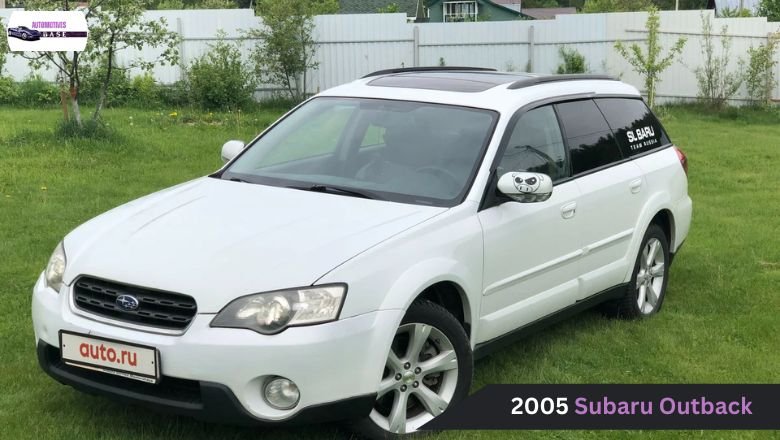
The year 2006 stands out as one of the worst for the Outback in this generation. It was plagued by issues such as transmission problems and engine issues that led to some reliability concerns among owners.
The Best Year Subaru Outback: 2007
The best year for Subaru Outback was 2007, which marked a milestone in Subaru’s dedication to innovation, featuring a symmetrical AWD system for enhanced stability on various terrains. Customers could opt for either the efficient 2.5L flat-4 engine or the more robust 3.0L flat-6 engine based on their preferences. Safety was prioritized in this model, with the addition of advanced features like Electronic Brake-force Distribution (EBD) and Brake Assist.
The redesigned infotainment system in the 2007 Outback offered passengers a more engaging entertainment experience. The premium trims boasted luxurious interiors adorned with plush leather upholstery, elevating the comfort and style quotient of the vehicle. The 2007 Outback stood out as a versatile and safe choice for drivers seeking adventure and refinement in their daily drives.
The Neutral Years: 2006
In 2006, Subaru introduced the next iteration of its model, building upon the successes of the previous version. One key focus was on improving vehicle safety by addressing ongoing airbag issues. The introduction of Vehicle Dynamics Control (VDC) further enhanced stability through sensor-based steering and braking feedback.
Challenges persisted, with reports from the NHTSA indicating gas pedal issues causing power lapses or unintended acceleration. Subaru continued to prioritize innovation and safety in their vehicle designs during this period.
The Worst Years: 2005, 2008, and 2009
The 2005 Subaru model year faced challenges with its suspension and brake line corrosion issues. Owners reported swerving in wet conditions and decreased braking efficiency due to potential leaks. A significant recall in 2014 highlighted these problems, affecting the 2005–2009 Outback models.
In contrast, the 2008 and 2009 models aimed to fix past mistakes but still had lingering concerns that needed attention. These later editions did not experience as many problems as the 2005 model but could still require recall interventions. Subaru worked to address these issues and improve the reliability of its vehicles in subsequent years.
Best And Worst Subaru Outback Years, 4th Generation (2010–2014)
The best year for the 4th generation Subaru Outback was arguably 2013. This model year received high praise for its refined interior, smooth ride quality, and impressive fuel economy. The 2013 Outback also boasted advanced safety features, making it a top choice for families and adventure-seekers alike.
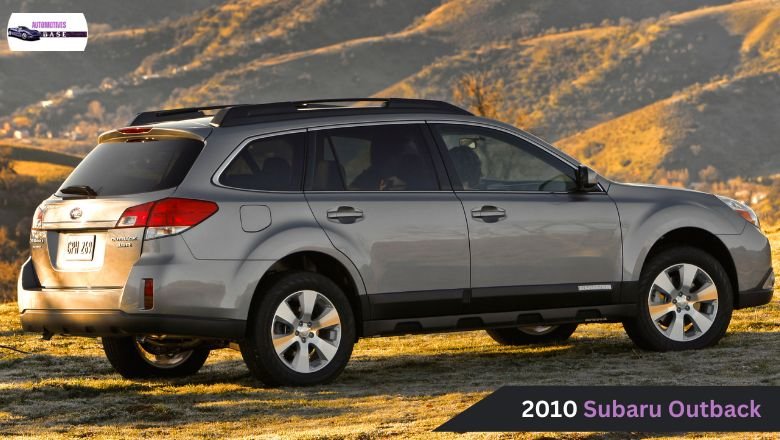
The worst year for the Subaru Outback within this generation was possibly 2011. Some owners reported issues with reliability, particularly in terms of engine performance and transmission problems.
The Best Year: 2014
The year 2014 marked a significant milestone for Subaru with the release of the fourth-generation Outback. This model was praised for its enhanced safety features, particularly the introduction of EyeSight Driver Assist Technology. With adaptive cruise control and pre-collision braking, this system aimed to set new standards in driver assistance.
Lane departure warnings added an extra layer of protection for drivers. The infotainment system received notable improvements, offering a more user-friendly experience and increased connectivity options. Some minor criticisms regarding interior design and road noise levels, the 2014 Outback’s strong engine performance and off-road capabilities were highly regarded by consumers.
The Neutral Year: 2013
The 2013 Subaru Outback marked a transitional year before the release of its refined 2014 model. This iteration benefited from technological upgrades seen in the fourth generation, making all-wheel drive standard. The spacious interior and generous cargo space were highlighted as standout features by reviewers, catering to families and outdoor enthusiasts alike.
Safety was a top priority, with stability control and a comprehensive airbag system earning praise. Some drivers voiced concerns regarding the continuously variable transmission (CVT), pointing out occasional glitches during operation. Minor issues related to dashboard electronics were reported but did not overshadow the overall positive reception of the vehicle for daily commuting and exploring off-road terrain.
The Worst Years: 2010, 2011, 2012
During the initial years of the fourth generation, which spanned from 2010 to 2012, several challenges arose with the models released during this time. The 2010 Subaru Outback model faced ongoing issues with the airbag inflator, leading to recalls in 2019 and 2020 for affected vehicles produced between 2010 and 2014.
Owners reported instances where the engine would unexpectedly stall while driving, presenting serious safety concerns. This engine stalling problem was not limited to just the 2010 model, as it also affected the 2011 and 2012 models. Some advancements in design and features seen in the latter two years of the fourth generation, they were plagued by reliability issues that impacted their overall performance and customer satisfaction levels.
Best And Worst Subaru Outback Years, 5th Generation (2015–2019)
The Subaru Outback 5th generation, produced from 2015 to 2019, represents a significant evolution in the model’s history. This version emphasized Subaru’s dedication to technological advancements and safety enhancements. The standout feature of this generation is the incorporation of advanced driver-assist systems, such as adaptive cruise control and lane departure warning.

The interior of the Outback saw improvements in material quality and overall comfort. The car’s handling and driving dynamics were refined compared to its predecessors, providing a smoother and more responsive driving experience.
The Best Subaru Outback Years: 2016, 2017
The 2016 and 2017 Subaru Outback stood out as the shining stars of the fifth generation. These best years for Subaru Outback were characterized by a strong focus on safety features, with EyeSight Driver Assist Technology at the forefront. This technology offered drivers various adaptive functions such as cruise control, lane-keep assist, and pre-collision braking, enhancing overall safety on the road.
Significant improvements were made to the entertainment system during these years. Users enjoyed a more seamless integration of their devices and benefited from enhanced navigation features. Mechanically, the engines in these models were praised for their fuel efficiency and reliability, making them popular choices among consumers.
The Neutral Years: 2018, 2019
The 2018 and 2019 Subaru Outback stayed on an evolutionary path rather than pushing for revolutionary changes. These models continued to prioritize safety and technology, with subtle upgrades in comfort and design.
Enhancements like improved noise insulation and fine-tuning of the suspension aim to provide a more comfortable driving experience. This period was not without challenges, as Subaru had to address recalls related to fuel pump failures promptly. These issues were resolved swiftly, but they did lead to some concerns among potential buyers.
The Worst Year: 2015
In 2015, the Subaru Outback faced significant challenges in its inaugural year. One of the major issues was a warning from the NHTSA regarding certain 2015 and 2016 models. This warning highlighted a manufacturing defect in which the steering column was improperly machined, potentially leading to a loss of steering ability.
Outbacks manufactured between February 29, 2016, and May 6, 2016, were affected by this issue. Prospective buyers were advised to carefully check the VIN of the vehicle before making a purchase to ensure they weren’t getting an affected model.
Electrical system problems were prevalent this year for the Subaru Outback. Many users reported sporadic glitches and inconsistencies in the system’s performance, impacting the overall user experience. These issues added to the challenges faced by owners of the 2015 Subaru Outback in terms of safety and usability.
The combination of steering column defects and electrical system malfunctions made it a troublesome year for those who owned or were considering purchasing this particular model.
Best And Worst Subaru Outback Years, 6th Generation (2020-2024)
The 6th generation Subaru Outback, produced between 2020 and 2024, marked a significant advancement in Subaru’s approach to engineering and design. This generation of Outback models featured a completely redesigned platform that prioritized enhanced comfort, stability, and safety for drivers and passengers alike.
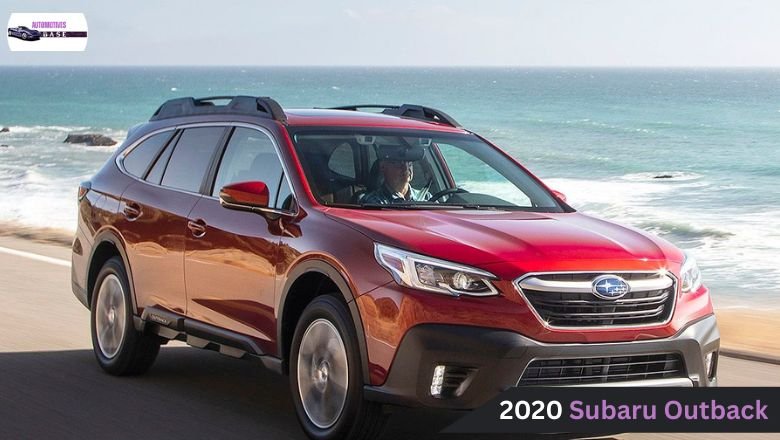
The best year for the 6th generation Subaru Outback is widely regarded as 2022. Subaru introduced several key updates to the Outback lineup, including improved technology features, updated exterior styling, and refined driving dynamics.
The Best Years: 2022, 2024
The years 2022 and 2024 Subaru Outback marked a significant milestone. These vehicles were defined by their cutting-edge technology, particularly the revolutionary EyeSight X Driver Assist system.
By combining radar, lidar, and high-definition cameras, Subaru offered unparalleled safety features to drivers. The inclusion of a new 2.4-liter turbocharged engine further enhanced performance without compromising fuel efficiency.
Inside the cabin, occupants were greeted with a premium interior featuring high-quality materials that exuded luxury. The updated infotainment system impressed with its larger touchscreens and faster processing speeds, offering an intuitive and user-friendly experience.
The Neutral Year: 2023
Neutral Year of 2023, the Subaru Outback presented itself as a steady iteration of its predecessors. Rather than revolutionizing the design, this model aimed to refine existing features for an enhanced driving experience. Minor adjustments were made to the adaptive cruise control system, specifically targeting traffic conditions to improve responsiveness.
The focus shifted towards enhancing user interaction by updating the infotainment system software. These updates sought to provide better connectivity options and a smoother overall user experience. No groundbreaking changes were introduced in 2023; the Subaru Outback continued to build on its legacy of reliability and safety.
Drivers could expect a familiar yet polished driving experience with this latest model. The neutral year brought about subtle improvements that culminated in a more refined vehicle overall.
The Worst Years: 2020, 2021
The early years of the sixth-generation 2020 and 2021 models were plagued with issues that hindered their performance. The 2020 Subaru Outback model received criticism for its easily cracking windshields and glitchy electrical system, which caused frequent malfunctions in the infotainment system.
These problems persisted into the 2021 Subaru Outback model, disappointing users looking for improvements. The safety technology in these vehicles was so advanced that it sometimes gave false alerts that created unnecessary panic among drivers. These flaws detracted from the overall appeal of the cars during this period.
Subaru Outback Average Resale Values
The resale value of the Subaru Outback can vary significantly based on the model year. Newer models tend to retain more value over time compared to older ones. The graph provides a visual representation of this trend, allowing potential buyers to make informed decisions.

Understanding how different model years hold their value can help consumers choose the best investment option. Factors such as mileage, condition, and market demand also influence resale values.
Conclusion
Best and Worst Subaru Outback Years have seen significant improvements and changes, making it crucial to thoroughly assess each model year before making a decision. Some years may shine in terms of performance and features; others may fall short in reliability or safety.
By considering factors such as budget, intended use, and personal preferences, you can narrow down the best and worst Subaru Outback years for your specific needs. Take your time to research and test drive different models to ensure that you find the perfect fit for your lifestyle.
FAQ`s
Which Subaru Outback Engine Is Most Reliable?
The Subaru Outback’s EJ22 engine is widely regarded as the most reliable option available. This 2.2-liter four-cylinder boxer engine has earned a reputation for being nearly bulletproof in terms of reliability. Owners commonly report driving well beyond 250,000 miles with this engine, with some reaching over 500,000 miles. The robust design and construction of the EJ22 contribute to its longevity and durability on the road.
Is Subaru Outback High Maintenance?
The average annual repair cost for a Subaru is $617, which can add up over time. While routine maintenance tasks like oil changes and tire rotations are relatively affordable, more significant repairs can be costly.

